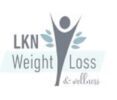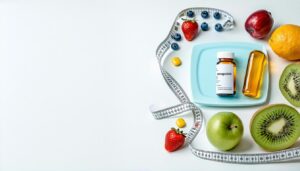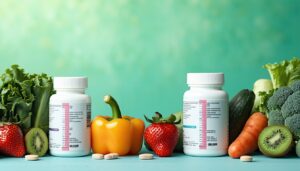The Importance of Healthy Eating
Proper nutrition is a fundamental pillar of any successful weight loss strategy. When striving to lose weight, understanding the nutritional values of food and the benefits of a balanced diet becomes crucial. Healthy eating habits can significantly contribute to achieving and maintaining weight loss goals.
Understanding Nutritional Values
When selecting healthy recipes for weight loss, understanding the nutritional values of different foods can guide better decisions. For instance, fresh produce and lean proteins are integral components of a healthy meal plan. The preference should lean towards limiting the intake of sugar, salt, and unsaturated fats (Mayo Clinic).
Moreover, it’s essential to focus on incorporating whole grains, fruits, vegetables, and lean proteins into meals. These foods can make you feel full on fewer calories, thereby contributing to weight loss.
An effective tactic to reduce carbohydrates and increase fiber intake is to add more vegetables and whole grains to meals, which is beneficial for weight loss (GGI Insights).
Benefits of a Balanced Diet
A balanced diet, rich in colorful vegetables, is beneficial for weight loss and overall health. These foods tend to be low in calories but high in vitamins, minerals, and fiber. The fiber content helps with satiety, keeping you feeling full for longer periods and thereby aiding in weight management.
In addition to weight management, controlling portion sizes and balancing meals with the right mix of protein, carbohydrates, and fats play a key role in maintaining a healthy diet (Better Health Victoria).
Thus, incorporating nutritious ingredients and maintaining a balanced diet not only contribute to weight loss but also promote overall health and wellbeing. In the following sections, we will delve deeper into effective weight loss strategies, meal planning, and share some healthy recipes for weight loss.
Effective Weight Loss Strategies
Weight loss is a complex process that requires a multifaceted approach. While exercise plays a vital role, nutrition can make or break your weight loss journey. This section will delve into two important aspects of nutrition for weight loss: portion control and meal planning.
Portion Control and Weight Loss
Portion control is a critical factor in successful weight management. Studies have found that providing individuals with larger portions of foods and beverages leads to substantial increases in energy intake, which can contribute to the development of obesity. This effect of portion size is sustained over weeks (NCBI).
Teaching people to select appropriate portions and use tools that facilitate portion control, such as portion-control plates, can improve weight loss. However, it’s important to note that limited data is available on whether education and tools lead to long-term changes in eating behavior and body weight (NCBI).
The use of preportioned foods (PPFs) can help add structure to meals and minimize decisions about the amount of food to eat, aiding in weight loss and weight loss maintenance. Both liquid meal replacements and solid PPFs have been shown to be effective.
An effective approach for weight management is not to urge people to eat less of all foods, but rather to encourage an increase in the proportion of low-energy-dense foods in their diets while limiting portions of high-energy-dense foods. Foods with high energy density have more calories for a given weight, and these can disproportionately increase energy intake compared to lower energy density foods.
Meal Planning for Weight Loss
Meal planning is another crucial part of a successful weight loss strategy. Planning your meals in advance can help you avoid last-minute unhealthy food choices. By having a plan, you can ensure that your meals include a balance of nutrients necessary for health and weight loss.
When planning meals, ensure that they include plenty of vegetables, fruits, lean proteins, and whole grains. These foods are high in fiber and protein, which can help you feel full and satisfied after meals. Avoid foods that are high in added sugars and unhealthy fats, as these can contribute to weight gain.
In addition to planning what you’ll eat, consider when you’ll eat. Eating at regular intervals throughout the day can help regulate your hunger and prevent overeating.
Remember, the goal of meal planning for weight loss is not just to reduce calorie intake, but to create a sustainable eating pattern that you can follow long-term. The integration of healthy recipes for weight loss into your meal plan can make the journey towards achieving your weight loss goals more enjoyable and rewarding.
Healthy Recipe Components
When focusing on weight loss, the components of your meals play a critical role in your success. Healthy recipes for weight loss should include fresh produce and lean proteins, while limiting sugar, salt, and unsaturated fat intake.
Emphasizing Whole Foods
Incorporating whole foods into your meal plans is crucial for weight loss. Whole foods such as fruits, vegetables, and grains are high in fiber, which can help you feel full and satisfied on fewer calories. Including fiber-rich foods like beans, lentils, whole grains, fruits, and vegetables in meals can increase satiety and help control weight by reducing overall calorie intake.
The Mediterranean diet, which emphasizes fruits, vegetables, nuts, seeds, whole grains, olive oil, and lean protein sources like fish and poultry, is linked to weight loss and improved heart health. Incorporating more vegetables and whole grains into meals helps reduce carbohydrates and increase fiber intake for effective weight loss.
| Whole Food Type | Example |
|---|---|
| Fruits | Apples, Berries, Bananas |
| Vegetables | Broccoli, Carrots, Spinach |
| Whole Grains | Quinoa, Brown Rice, Oats |
| Lean Proteins | Chicken Breast, Tofu, Lentils |
The Role of Lean Proteins
Lean proteins play a significant part in healthy recipes for weight loss. They not only help to keep you feeling full but also aid in muscle recovery and growth. Avocados, a source of healthy fats and fiber, can help increase feelings of fullness and satisfaction, potentially leading to reduced calorie consumption and supporting weight loss efforts.
Opting for low-calorie snacks and desserts, such as air-popped popcorn and fruit, can help satisfy cravings without derailing weight loss progress.
| Lean Protein Type | Example |
|---|---|
| Animal Proteins | Chicken, Turkey, Fish |
| Plant Proteins | Lentils, Chickpeas, Black Beans |
| Dairy Alternatives | Almond Milk, Soy Milk, Coconut Milk |
By taking the time to understand the components of healthy weight loss recipes, you can make informed choices that support your weight loss goals. Whether it’s choosing whole grains over refined ones or incorporating lean proteins into your diet, these small changes can have a significant impact on your overall health and weight loss journey.
Cooking Methods for Weight Loss
Creating healthy recipes for weight loss involves more than just choosing the right ingredients. The way you prepare your food can have a significant impact on its nutritional value and can support your weight loss efforts. Here, we explore four cooking methods that promote healthier eating and contribute to weight loss.
Grilling and Baking
Grilling is a cooking technique that allows fat to drip away from the food while it cooks, reducing the overall calorie content. It’s an effective method for preparing lean meats and vegetables, enhancing their natural flavors without the need for additional oils or fats. However, it’s crucial to avoid charring food or allowing it to come into direct contact with flames, as this can lead to the formation of potential carcinogens.
| Cooking Method | Fat Content Reduction |
|---|---|
| Grilling | High |
| Frying | Low |
Baking, on the other hand, is a dry-heat cooking method that requires little or no oil. This helps to cut down on fat and calorie intake, making it a suitable method for those looking to maintain a healthy diet. Baking is versatile and can be used for a range of foods, from lean meats and fish to vegetables and whole grains.
| Cooking Method | Fat Content Reduction |
|---|---|
| Baking | High |
| Frying | Low |
Steaming and Sautéing
Steaming is considered one of the best cooking methods for preserving nutrients. It does not cause significant loss of vitamin C, unlike other cooking methods. While steamed vegetables may turn out bland, flavor can be added through herbs and seasonings, making this a healthy and versatile cooking method (CardioMender Weight Loss).
| Cooking Method | Nutrient Preservation |
|---|---|
| Steaming | High |
| Frying | Low |
Sautéing, meanwhile, involves using a small amount of oil in a shallow pan over medium to high heat. This method preserves more nutrients than boiling and offers cardiovascular benefits. It’s a suitable option for cooking various cuts of meat, fish, and vegetables, offering a balance between flavor and nutrition.
| Cooking Method | Nutrient Preservation |
|---|---|
| Sautéing | High |
| Boiling | Low |
Choosing these methods over frying, which results in higher calorie and trans fat content, is a simple and effective way to create healthier meals. By incorporating grilling, baking, steaming, and sautéing into your cooking routine, you can prepare delicious and nutritious meals that support your weight loss goals.
Healthy Recipes for Every Meal
The incorporation of balanced, nutrient-dense meals and snacks into your daily routine is a key element in achieving weight loss goals. Here, we provide a guide to healthy recipes for every meal, tailored to support weight loss efforts.
Breakfast Recipes for Weight Loss
Start your day with a nutritious breakfast, aiming for between 300 and 400 calories, at least 20 grams of protein, 5 grams of fiber, and less than 20 grams of sugar. A Mediterranean egg white omelette with vegetables and feta is one such option, providing a protein-packed, fiber-rich start to the day.
Alternatively, opt for high-fiber porridge made with ingredients like oats or whole grains. Examples include Slow-Cooker Overnight Barley Porridge and Quinoa Porridge, both of which support weight management and provide nutritional benefits.
Lunch and Dinner Weight Loss Recipes
For lunch, aim for around 400 calories with a balance of protein, carbohydrates, and healthy fats. A turkey avocado wrap is a recommended option offering a mix of lean protein, heart-healthy fats, and fiber. Edamame Hummus Wrap and salads, rich in fiber and nutrients, are also satisfying lunch options.
A dinner to aid weight loss should be about 500 calories and incorporate lean protein, whole grains, and plenty of vegetables. An example is the grilled salmon with quinoa and steamed broccoli. Bean-based casseroles and whole grain dishes, such as a hearty vegetarian chili and a bean casserole, are other excellent dinner choices.
Healthy Snacks and Desserts
In addition to meals, snacks totaling roughly 200 calories can be beneficial for weight loss. Opt for nutrient-dense snacks such as Greek yogurt with fruit.
The desire for a sweet treat need not be a barrier to weight loss. Enjoy desserts in moderation, opting for recipes that are lower in calories and include healthier ingredients. EatingWell suggests options like Berry-Lemon Sorbet, Cherry-Berry Ice Pops, and Raspberry-Almond Thumbprint Cookies. These desserts incorporate fruits and nuts, providing essential nutrients while satisfying sweet cravings.
Incorporating these healthy recipes for weight loss into your diet can be a key factor in achieving and maintaining your weight loss goals. Always remember, the journey to weight loss and wellness is not about deprivation, but about finding a balance and enjoying what you eat.
The Role of Hydration in Weight Loss
While embracing nutritious meals as part of your weight loss journey is vital, the importance of staying hydrated cannot be overstated. Drinking enough water plays a crucial role in weight management and overall health.
Importance of Drinking Water
Hydration is a critical factor in weight loss, with water playing a pivotal role in controlling hunger and cravings. As stated on Livestrong, drinking water throughout the day can aid in managing hunger, which in turn supports weight loss efforts.
Water can also aid in digestion and nutrient absorption. Furthermore, it can help boost metabolism, enabling the body to burn calories more efficiently. It also assists in flushing out toxins and waste from the body, promoting overall well-being as you work towards your weight loss goals.
Healthy Hydration Habits
Developing healthy hydration habits is a key part of a successful weight management plan. Here are a few habits that can help.
- Drink Water before Meals: Consuming water before meals can help control portion sizes and prevent overeating. Not only can it make you feel fuller, but it also aids in digestion and nutrient absorption.
- Choose Water over Sugary Drinks: Sugary drinks, such as sodas and fruit juices, are high in calories and provide little to no nutritional value. Opting for water instead can significantly reduce your calorie intake.
- Stay Hydrated throughout the Day: Make it a habit to drink water consistently throughout the day. Keeping a water bottle handy can serve as a constant reminder to stay hydrated.
- Drink Water when You Feel Hungry: Sometimes, the body can mistake thirst for hunger. Drinking water when you feel hunger pangs can help curb unnecessary snacking.
- Hydrate after Workouts: Physical activity leads to water loss through sweating. Rehydrating after workouts replenishes the body, supports muscle recovery, and prevents dehydration.
Remember, everyone’s hydration needs can vary based on factors like age, gender, weight, physical activity, and overall health. It’s advisable to listen to your body and drink water when you’re thirsty. As part of your weight loss journey, incorporating healthy hydration habits along with healthy recipes for weight loss can be a game-changer for achieving your goals.








